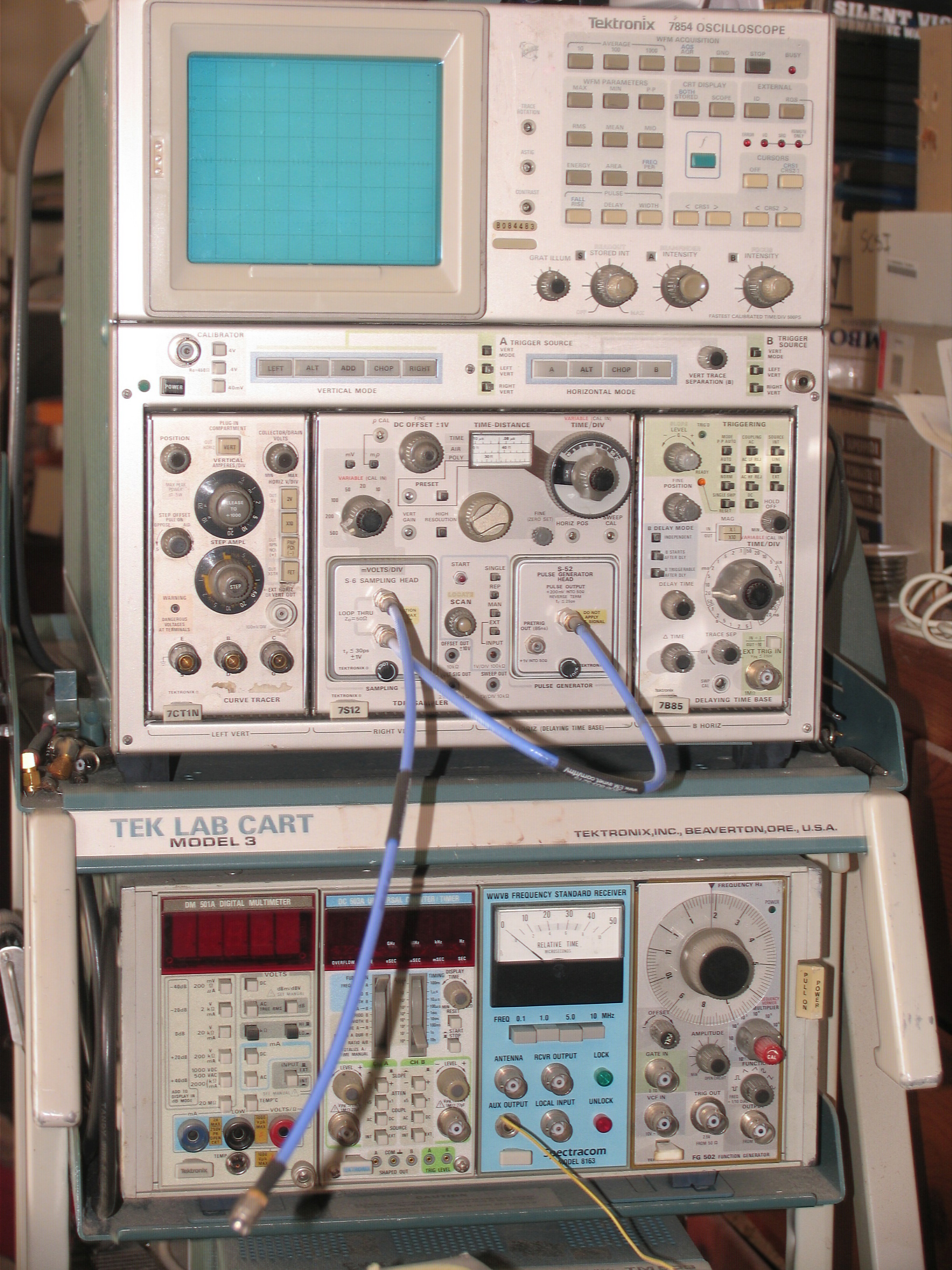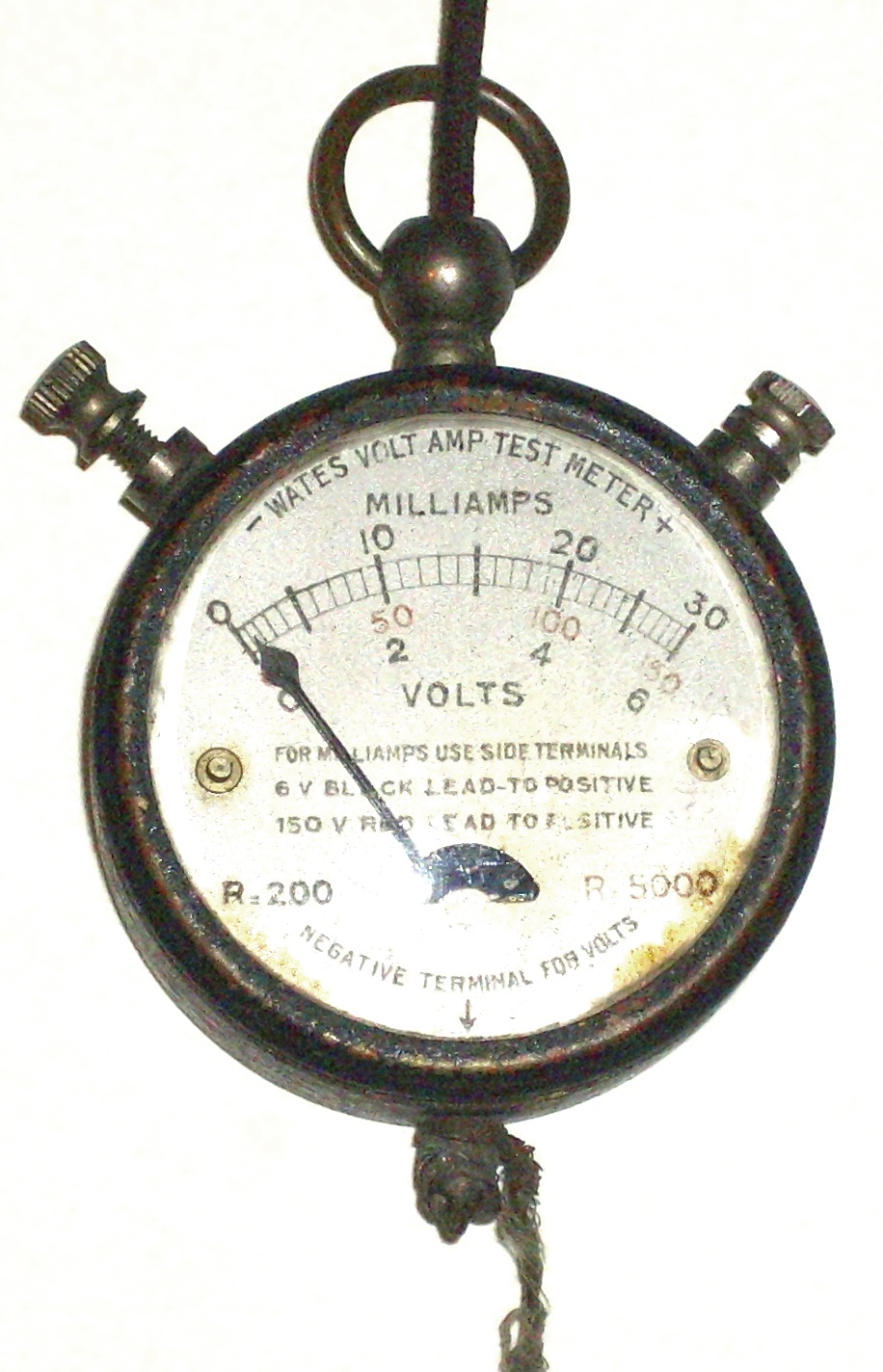|
Precision Measurement Equipment Laboratory
A Precision Measurement Equipment Laboratory (PMEL) is a United States Air Force (USAF) facility in which the calibration and repair of test equipment takes place. This practice is also known as metrology: ''the science of measurement''. Metrology is defined as the science of weights & measures, while a PMEL is the place where technicians perform all of the metrology for the U.S. Air Force. Air personnel in this career field are primarily responsible for the repair, calibration, and modification of test, measurement, and diagnostic equipment (TMDE), including precision measurement equipment laboratory standards and automatic test equipment. They also supervise the process and use of TMDE to perform voltage, current, power, impedance, frequency, microwave, temperature, physical-dimensional, and optical measurements. They perform these functions in a strictly controlled laboratory environment where the temperature and humidity are constantly monitored. The Air Force Specialty Code ( ... [...More Info...] [...Related Items...] OR: [Wikipedia] [Google] [Baidu] |
United States Air Force
The United States Air Force (USAF) is the Air force, air service branch of the United States Department of Defense. It is one of the six United States Armed Forces and one of the eight uniformed services of the United States. Tracing its origins to 1 August 1907, as a part of the United States Army Signal Corps, the USAF was established by transfer of personnel from the Army Air Forces with the enactment of the National Security Act of 1947. It is the second youngest branch of the United States Armed Forces and the fourth in United States order of precedence, order of precedence. The United States Air Force articulates its core missions as air supremacy, intelligence, surveillance, target acquisition, and reconnaissance, global integrated intelligence, surveillance and reconnaissance, airlift, rapid global mobility, Strategic bombing, global strike, and command and control. The United States Department of the Air Force, Department of the Air Force, which serves as the USAF's ... [...More Info...] [...Related Items...] OR: [Wikipedia] [Google] [Baidu] |
Calibration
In measurement technology and metrology, calibration is the comparison of measurement values delivered by a device under test with those of a calibration standard of known accuracy. Such a standard could be another measurement device of known accuracy, a device generating the quantity to be measured such as a voltage, a sound tone, or a physical artifact, such as a meter ruler. The outcome of the comparison can result in one of the following: * no significant error being noted on the device under test * a significant error being noted but no adjustment made * an adjustment made to correct the error to an acceptable level Strictly speaking, the term "calibration" means just the act of comparison and does not include any subsequent adjustment. The calibration standard is normally traceable to a national or international standard held by a metrology body. BIPM Definition The formal definition of calibration by the International Bureau of Weights and Measures (BIPM) is the foll ... [...More Info...] [...Related Items...] OR: [Wikipedia] [Google] [Baidu] |
Metrology
Metrology is the scientific study of measurement. It establishes a common understanding of Unit of measurement, units, crucial in linking human activities. Modern metrology has its roots in the French Revolution's political motivation to standardise units in France when a length standard taken from a natural source was proposed. This led to the creation of the decimal-based metric system in 1795, establishing a set of standards for other types of measurements. Several other countries adopted the metric system between 1795 and 1875; to ensure conformity between the countries, the ''International Bureau of Weights and Measures, Bureau International des Poids et Mesures'' (BIPM) was established by the Metre Convention. This has evolved into the International System of Units (SI) as a result of a resolution at the 11th General Conference on Weights and Measures (CGPM) in 1960. Metrology is divided into three basic overlapping activities: * The definition of units of measurement * ... [...More Info...] [...Related Items...] OR: [Wikipedia] [Google] [Baidu] |
Air Force Specialty Code
The Air Force Specialty Code (AFSC) is an alphanumeric code used by the United States Air Force to identify a specific job. Officer (armed forces), Officer AFSCs consist of four characters and Enlisted rank, enlisted AFSCs consist of five characters. A letter prefix or suffix may be used with an AFSC when more specific identification of position requirements and individual qualifications is necessary. The AFSC is similar to the United States military occupation code, military occupational specialty codes (MOS Codes) used by the United States Army and the United States Marine Corps or enlisted List of United States Navy ratings, ratings and USN officer List of Naval Officer Designators, designators and Naval officer billet classifications (NOBCs) used by the United States Navy and enlisted List of United States Coast Guard ratings, ratings and USCG officer specialties used by the United States Coast Guard. The United States Space Force equivalent is known as the Space Force Specialt ... [...More Info...] [...Related Items...] OR: [Wikipedia] [Google] [Baidu] |
2P0X1
A Precision Measurement Equipment Laboratory (PMEL) is a United States Air Force (USAF) facility in which the calibration and repair of test equipment takes place. This practice is also known as metrology: ''the science of measurement''. Metrology is defined as the science of weights & measures, while a PMEL is the place where technicians perform all of the metrology for the U.S. Air Force. Air personnel in this career field are primarily responsible for the repair, calibration, and modification of test, measurement, and diagnostic equipment (TMDE), including precision measurement equipment laboratory standards and automatic test equipment. They also supervise the process and use of TMDE to perform voltage, current, power, impedance, frequency, microwave, temperature, physical-dimensional, and optical measurements. They perform these functions in a strictly controlled laboratory environment where the temperature and humidity are constantly monitored. The Air Force Specialty Code ( ... [...More Info...] [...Related Items...] OR: [Wikipedia] [Google] [Baidu] |
Electronic Test Equipment
Electronic test equipment is used to create signals and capture responses from electronic devices under test (DUTs). In this way, the proper operation of the DUT can be proven or faults in the device can be traced. Use of electronic test equipment is essential to any serious work on electronics systems. Practical electronics engineering and assembly requires the use of many different kinds of electronic test equipment ranging from the very simple and inexpensive (such as a test light consisting of just a light bulb and a test lead) to extremely complex and sophisticated such as automatic test equipment (ATE). ATE often includes many of these instruments in real and simulated forms. Generally, more advanced test gear is necessary when developing circuits and systems than is needed when doing production testing or when troubleshooting existing production units in the field. Types of test equipment Basic equipment The following items are used for basic measurement of voltages, c ... [...More Info...] [...Related Items...] OR: [Wikipedia] [Google] [Baidu] |
Frequency Counter
A frequency counter is an electronics, electronic measuring instrument, instrument, or Electronic component, component of one, that is used for measuring frequency. Frequency counters usually measure the number of cycles of oscillation or pulses per second in a periodic electronic signal. Such an instrument is sometimes called a cymometer, particularly one of Chinese manufacture. Operating principle All frequency counters rely on an internal electronic oscillator, known as the ''timebase'', which serves as a time reference for measurements. Most frequency counters work by using a Counter (digital), digital counter to count the number of rising or falling signal edges occurring in the measured signal within a specific period of time, known as the ''gate time''. At the end of the gate time, the accumulated count is transferred to a holding register and the counter is reset to zero to prepare for the next measurement. The value stored in the holding register directly indicates th ... [...More Info...] [...Related Items...] OR: [Wikipedia] [Google] [Baidu] |
Oscilloscope
An oscilloscope (formerly known as an oscillograph, informally scope or O-scope) is a type of electronic test instrument that graphically displays varying voltages of one or more signals as a function of time. Their main purpose is capturing information on electrical signals for debugging, analysis, or characterization. The displayed waveform can then be analyzed for properties such as amplitude, frequency, rise time, time interval, distortion, and others. Originally, calculation of these values required manually measuring the waveform against the scales built into the screen of the instrument. Modern digital instruments may calculate and display these properties directly. Oscilloscopes are used in the sciences, engineering, biomedical, automotive and the telecommunications industry. General-purpose instruments are used for maintenance of electronic equipment and laboratory work. Special-purpose oscilloscopes may be used to analyze an automotive ignition system or to display th ... [...More Info...] [...Related Items...] OR: [Wikipedia] [Google] [Baidu] |
Synthesized Signal Generator
Synthesis or synthesize may refer to: Science Chemistry and biochemistry *Chemical synthesis, the execution of chemical reactions to form a more complex molecule from chemical precursors **Organic synthesis, the chemical synthesis of organic compounds ***Total synthesis, the complete organic synthesis of complex organic compounds, usually without the aid of biological processes ***Convergent synthesis or linear synthesis, a strategy to improve the efficiency of multi-step chemical syntheses **Dehydration synthesis, a chemical synthesis resulting in the loss of a water molecule *Biosynthesis, the creation of an organic compound in a living organism, usually aided by enzymes **Photosynthesis, a biochemical reaction using a carbon molecule to produce an organic molecule, using sunlight as a catalyst **Chemosynthesis, the synthesis of biological compounds into organic waste, using methane or an oxidized molecule as a catalyst **Amino acid synthesis, the synthesis of an amino acid ... [...More Info...] [...Related Items...] OR: [Wikipedia] [Google] [Baidu] |
Power Sensor
Power may refer to: Common meanings * Power (physics), meaning "rate of doing work" ** Engine power, the power put out by an engine ** Electric power, a type of energy * Power (social and political), the ability to influence people or events Mathematics, science and technology Computing * IBM POWER (software), an IBM operating system enhancement package * IBM POWER architecture IBM POWER is a reduced instruction set computer (RISC) instruction set architecture (ISA) developed by IBM. The name is an acronym for ''Performance Optimization With Enhanced RISC''. The ISA is used as base for high end microprocessors from IBM ..., a RISC instruction set architecture * Power ISA, a RISC instruction set architecture derived from PowerPC * IBM Power microprocessors, made by IBM, which implement those RISC architectures * Power.org, a predecessor to the OpenPOWER Foundation Mathematics * Exponentiation, "''x'' to the power of ''y''" * Power function * Power of a point * Statistical power ... [...More Info...] [...Related Items...] OR: [Wikipedia] [Google] [Baidu] |
Digital Multimeter
A multimeter (also known as a multi-tester, volt-ohm-milliammeter, volt-ohmmeter or VOM, avometer or ampere-volt-ohmmeter) is a measuring instrument that can measure multiple electrical properties. A typical multimeter can measure voltage, resistance, and current, in which case can be used as a voltmeter, ohmmeter, and ammeter. Some feature the measurement of additional properties such as temperature and capacitance. Analog multimeters use a microammeter with a moving pointer to display readings. Digital multimeters (DMMs) have numeric displays and are more precise than analog multimeters as a result. Meters will typically include probes that temporarily connect the instrument to the device or circuit under test, and offer some intrinsic safety features to protect the operator if the instrument is connected to high voltages that exceed its measurement capabilities. Multimeters vary in size, features, and price. They can be portable handheld devices or highly-precise bench inst ... [...More Info...] [...Related Items...] OR: [Wikipedia] [Google] [Baidu] |





